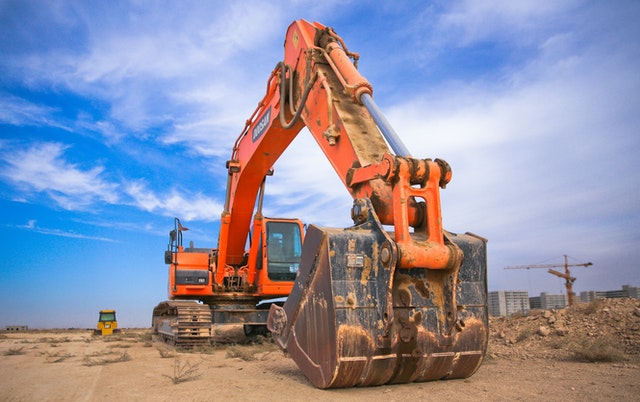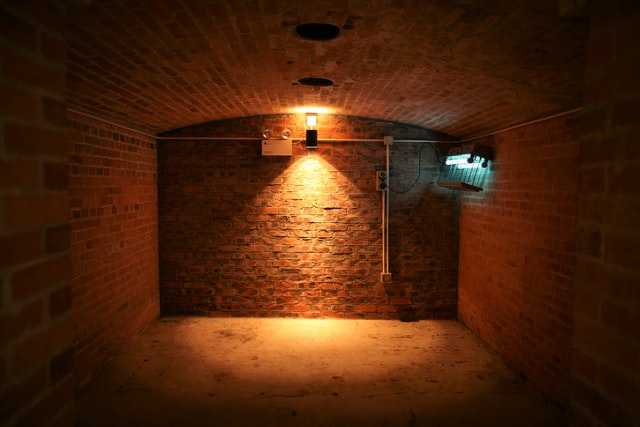
The construction industry is one of the top contributors to greenhouse gas emissions, playing a huge role in climate change. The effects of construction on the environment are immense from mining precious resources, extracting materials, and destroying habitat. To better understand its impact, it is vital to understand the industry holistically, identifying how the process, materials and design all play a role in climate change.
When thinking about how this sector impacts the environment, it is easy to picture the typical construction zone, with dirt, lots of machinery, and brand new resources like steel and wood ready to be assembled. However, the effects on the environment begin far before the workzone and can last for decades after.
Consider the resources that are required. Many of the built materials, such as steel and plastic, rely on the fossil fuel industry, making them incredibly carbon-intensive. Before the building is even constructed, the project carries a significant carbon footprint.
However, the construction industry is beginning to make substantial changes in how projects are carried out. From the materials selected to the way in which sites are cleared, there is a lot of positive momentum within the sector to lower its carbon footprint. By identifying the main effects on the environment, professionals can work to create plausible solutions to somewhat large and abstract problems.
1. Air Quality

One of the top sources for air pollution at a construction site is diesel equipment. Many of these machines have long operational lives, meaning they are not regularly updated. Depending on state regulations, most machinery also lacks emissions standards, meaning greenhouse gases are not measured.
In addition to equipment, environmental disturbances and the use of certain materials also contribute to poor air quality. Some of these effects are immediate, while others are more long-lived. For example, nitrogen oxides may cause temporary smog during a construction period. While this may eventually lift, higher levels of particulate matter can lead to cancer, heart and lung disease, and asthma in nearby communities.
Toxic building materials have a lasting effect on air quality in a built environment, both inside and out. Airborne contaminants can include volatile organic compounds, asbestos and gases like carbon monoxide. These chemicals are mostly present in furnishings and finishes, and their impact tends to be more severe if the building has poor ventilation.
The built environment contributes 39% of energy-related carbon emissions globally. Construction’s impact on air quality is not surprising, but there are several solutions to mediate these effects. First, effective regulatory change is necessary to legally enforce low-carbon initiatives. Second, economic incentives to motivate construction companies to build more sustainably can increase the likelihood that long-term changes are made.
2. Water Pollution

When land is cleared for new construction, the damage goes below surface level. If any body of water is present at the site, rerouting or damming the waterway can have a huge impact on the surrounding area. One of the biggest problems with construction is sediment — fine silt that comes from loose soil — that pollutes waterways and damages aquatic habitats. Sediment pollution can also affect drinkable water sources and fisheries, and plays a role in potential flooding issues.
Most often, sediment is not the only thing that ends up in the water. Chemicals, oil, paint and debris are just a few examples of substances that come from construction sites. Some forms of pollution can be easily remedied or will decrease over time, but construction pollution can affect groundwater, which is more difficult to treat than surface water. Many communities rely on groundwater for their main source, making protection vital.
In the last decade, the EPA ruled to protect America’s waterways from construction pollution. This initiative includes essential measures to mitigate damage caused by this industry. However, there is still a need to incentivize less destruction upfront, rather than just remedial action after the fact. Many green building standards now include analyzing land before construction, to make sure vulnerable waterways are not affected.
3. Habitat Loss
It may not be altogether surprising, but construction has a substantial effect on natural ecosystems. Habitat loss comes in many forms, and an area does not necessarily need to be completely destroyed to feel lasting impacts. This also includes habitat fragmentation and degradation. Fragmentation refers to wildlife being divided by roads and development. Destruction, fragmentation and degradation all leave irreparable marks on the land, making it of utmost importance to consider wildlife before beginning a new project.
When beginning a new construction project, companies should implement practices that prevent disturbances to wildlife by identifying vulnerable species, key habitats and effects on migratory birds. While we often consider land animals as the most affected by habitat loss, aquatic and avian species also feel the impact of the built environment.
In addition to identifying vulnerable populations, there should also be a consideration of off-site impacts, such as pollution, water or other significant changes to habitat. Construction doesn’t just transform the physical area where a building is erected — the repercussions are much more extensive. By paying attention to this, construction companies can design in a more effective and sustainable way.
4. Climate Change
The construction industry plays a central role in climate change. This is partially due to how extensive the industry is, and the many aspects that it encompasses. For instance, the mining of resources for buildings, the manufacturing of goods for furnishing, and the electricity and heat used are all major factors. Residential and commercial buildings account for 39% of energy consumption in the United States. However, having a vital role in the problem presents an opportunity. The sector can be a key player in the solution to mitigating climate change and building more resiliently.
In 2019, the United Nations published a report on material-efficient strategies for a low-carbon future, addressing the role that construction plays in achieving the goals set out in the Paris Agreement. This agreement states the environmental goals that would effectively fight climate change and are supported by countries worldwide. However, a low-carbon future involves improvements at all stages, which is why extending the lifecycle of construction’s supply chain is essential. This is achieved by reusing materials and finding innovative ways to reintegrate waste.
Like any sustainable change, fighting climate change will require an economic incentive. The world is becoming increasingly urbanized, and these communities will be the most vulnerable to changes in temperature and weather. Because of the possible financial burden of climate-related catastrophe, emerging markets could attract almost $30 trillion in climate-related investments in the next decade.
5. Landfill Waste
Construction trash is one of the top contributors to industrial waste. Demolition projects account for nearly 90% of that amount, meaning most materials used in projects are never reused. It is almost impossible to visualize the number of buildings that are demolished globally. Construction waste includes plastic, metal, wood, concrete and gypsum. The amount globally is predicted to double between 2018 and 2025.
One solution is sustainably managing waste and reusing materials, if possible. Many items, such as brick, stone and concrete, can be salvaged for new projects. Concrete especially is a carbon-intensive resource, and 10 billion tons of it are manufactured every year.
A Greener Built Environment
While problems like air pollution and habitat loss may seem enormous, they are also fixable and preventable. The construction industry is making significant strides in improving regulations to reduce impact, both throughout the process and in how the built environment is designed. While some problems cannot be addressed overnight, there are plenty of incredible changes taking place within the industry to mitigate its effects on the environment.



